 W
WBarnard's Express, later known as the British Columbia Express Company or BX, was a pioneer transportation company that served the Cariboo and Fraser-Fort George regions in British Columbia, Canada from 1861 until 1921.
 W
WThe peoples of Haida Gwaii were a fiercely independent people and rejected outside control. Since first being sighted by Europeans in 1774 by Juan Pérez, at Langara Island there were many police actions against the Haida. This continued until the population was decimated in the mid-19th century, with a population of tens of thousands being reduced by smallpox to under a thousand. Hostile colonial administration further reduced the population to 588 by 1915.
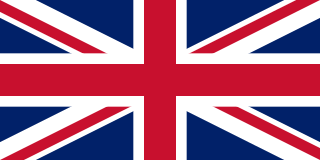 W
WThe Colony of British Columbia was a crown colony in British North America from 1858 until 1866. It was founded by the British Crown, who appointed James Douglas, then Governor of the neighbouring colony of Vancouver's Island as the Colony's first Governor. Richard Clement Moody was the Colony's first Chief Commissioner of Lands and Works. At its creation, it physically constituted approximately half the present day Canadian province of British Columbia, since it did not include the Colony of Vancouver Island, the vast regions north of the Nass and Finlay Rivers, the regions east of the Rocky Mountains, or any of the coastal islands. The Colony of the Queen Charlotte Islands and the Stikine Territory were merged with it in 1863, and it was amalgamated in 1866 with the Colony of Vancouver Island to form a new Colony of British Columbia.
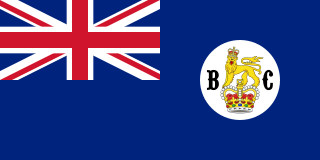 W
WThe Colony of British Columbia was a British Crown Colony that resulted from the amalgamation of the two former colonies, the Colony of Vancouver Island and the mainland Colony of British Columbia. The two former colonies were united in 1866, and the united colony existed until its incorporation into the Canadian Confederation in 1871.
 W
WColumbia Rediviva was a privately owned American ship under the command of John Kendrick, along with Captain Robert Gray, best known for going to the Pacific Northwest for the maritime fur trade. "Rediviva" was added to her name upon a rebuilding in 1787. Since Columbia was privately owned, she did not carry the prefix designation "USS".
 W
WFort Berens, also spelled Fort Behrens, was a never-completed establishment of the Hudson's Bay Company on the Fraser River, located immediately across the river from today's town of Lillooet, British Columbia, Canada, in that province's central Fraser Canyon region. The post was designated and materials ordered for its construction in 1859, and was intended to serve as a supply outlet for the gold rush population of the area, which was the northern centre of gold-mining activity on the Fraser during the Fraser Canyon Gold Rush (1858–60). Although a plot of land was allocated, and building supplies were brought into the site, the post was never constructed and by 1861 orders from company headquarters decommissioned the post and the supplies were removed due to an absence of economic viability with the collapse of the rush. A "satellite" of Fort Kamloops, the post was named after Henry Hulse Berens, deputy Hudson's Bay Company governor 1856-58 and governor 1858-63. Immediately adjacent to the site that was to be Fort Berens, just to its north, were the boomtowns of Parsonville and Marysville, which likewise disappeared by the end of the rush, though the Parsonville name remained in use as a tobacco press and farm for the locality for some time. A cable ferry connected the town of Lillooet and the three localities on the east bank of the Fraser. The route to the Cariboo known as the Old Cariboo Road started from the east bank and ran via Pavilion and Clinton to Alexandria.
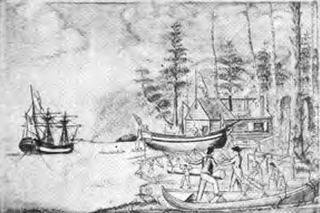 W
WFort Defiance was a small outpost built by the crew of the Columbia Rediviva for use as winter quarters during 1791-1792 on Meares Island in present-day British Columbia, Canada. They were under the command of American merchant and maritime fur trader Captain Robert Gray.
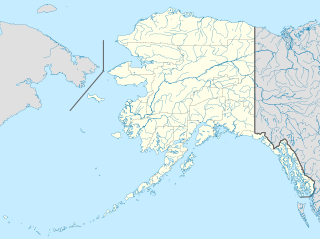 W
WFort Durham, also known as Fort Taku, Taku, Taco, and Tacouw, is an archaeological site near Taku Harbor, Alaska, within the limits of Juneau City and Borough and Tongass National Forest. It was one of three Hudson's Bay Company (HBC) posts set up in Russian America. The Fort Durham Site was declared a U.S. National Historic Landmark in 1978.
 W
WKing George was a British merchant ship engaged in whaling and the maritime fur trade in the late 18th century. She was launched in 1785 and taken up by the King George's Sound Company. She sailed in 1785 on a voyage of exploration, together with the Queen Charlotte. The two vessels whaled in the South Seas and sought furs in the Pacific Northwest. They returned to England via Canton, where they picked up cargoes for the British East India Company (EIC). Their voyage accomplished a circumnavigation of the world. On her return new owners apparently sailed her between Britain and South Carolina. She is no longer listed after 1796.
 W
WThe Legislative Council of British Columbia was an advisory body created in 1867 to the governor of the "new" Colony of British Columbia, which had been created from the merger of the old Colonies of Vancouver Island and British Columbia. The new colony, like its predecessors, did not have responsible government, and while its debates and resolutions carried considerable weight, executive power remained in the hands of the governor, who at the time of the council's founding was Frederick Seymour.
 W
WMcGowan's War was a bloodless war that took place in Yale, British Columbia in the fall of 1858. The conflict posed a threat to the newly established British authority on the British Columbia mainland, at the onset of the Fraser Canyon Gold Rush. It was called Ned McGowan's War after one of the conflict's main antagonists.
 W
WThe Mexicana was a topsail schooner built in 1791 by the Spanish Navy at San Blas, New Spain. It was nearly identical to the Sutil, also built at San Blas later in 1791. Both vessels were built for exploring the newly discovered Strait of Georgia, carried out in 1792 under Dionisio Alcalá Galiano, on the Sutil, and Cayetano Valdés y Flores, on the Mexicana. During this voyage the two Spanish vessels encountered the two British vessels under George Vancouver, HMS Discovery and Chatham, which were also engaged in exploring the Strait of Georgia. The two expeditions cooperated in surveying the complex channels between the Strait of Georgia and Queen Charlotte Strait, in the process proving the insularity of Vancouver Island. After this first voyage the Mexicana continued to serve the San Blas Naval Department, making various voyages to Alta California and the Pacific Northwest coast.
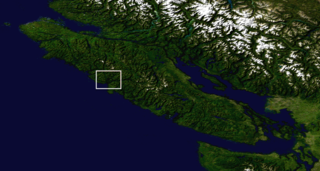 W
WThe Nootka Crisis, also known as the Spanish Armament, was an international incident and political dispute between the Spanish Empire, the Kingdom of Great Britain, and the fledgling United States of America triggered by a series of events that took place during the summer of 1789 at the Spanish outpost Santa Cruz de Nuca, in Nootka Sound, present-day British Columbia, Canada. The commander of the outpost, Jose Esteban Martínez, seized some British commercial ships which had come for the maritime fur trade and to build a permanent post at Nootka Sound. Public outcry in England led to the mobilization of the British and Spanish navies and the possibility of war. Both sides called upon allies, and although Spain's key ally France also mobilized their navy, they soon announced they would not go to war. Without French help Spain had little hope against the allied forces of the British and the Dutch, resulting in Spain seeking a diplomatic solution and making concessions.
 W
WThe Oregon boundary dispute or the Oregon Question was a 19th-century territorial dispute over the political division of the Pacific Northwest of North America between several nations that had competing territorial and commercial aspirations over the region.
 W
WIn the nineteenth century, the Oregon Country was a disputed region of the Pacific Northwest of North America. The region was occupied by British and French Canadian fur traders from before 1810, and American settlers from the mid-1830s, with its coastal areas north from the Columbia River frequented by ships from all nations engaged in the maritime fur trade, most of these from the 1790s through 1810s being Boston-based. The Oregon Treaty of 1846 ended disputed joint occupancy pursuant to the Treaty of 1818 and established the British-American boundary at the 49th parallel.
 W
WThe Oregon Treaty is a treaty between Great Britain and the United States that was signed on June 15, 1846, in Washington. The treaty brought an end to the Oregon boundary dispute by settling competing American and British claims to the Oregon Country; the area had been jointly occupied by both Britain and the U.S. since the Treaty of 1818.
 W
WThe Pacific Fur Company (PFC) was an American fur trade venture wholly owned and funded by John Jacob Astor that functioned from 1810 to 1813. It was based in the Pacific Northwest, an area contested over the decades between the United Kingdom of Great Britain and Ireland, the Spanish Empire, the United States of America and the Russian Empire.
 W
WThe Pig War was a confrontation in 1859 between the United States and the United Kingdom over the British–U.S. border in the San Juan Islands, between Vancouver Island and the State of Washington. The Pig War, so called because it was triggered by the shooting of a pig, is also called the Pig Episode, the Pig and Potato War, the San Juan Boundary Dispute and the Northwestern Boundary Dispute. Aside from the death of one pig, this dispute was a bloodless conflict.
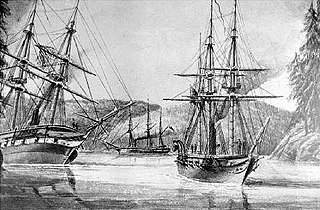 W
WHMS Plumper was an 8-gun wooden screw sloop of the Royal Navy, the fifth and last ship to bear the name. Launched in 1848, she served three commissions, firstly on the West Indies and North American Station, then on the West Africa Station and finally in the Pacific Station. It was during her last commission as a survey ship that she left her most enduring legacy; in charting the west coast of British Columbia she left her name and those of her ship's company scattered across the charts of the region. She paid off for the last time in 1861 and was finally sold for breaking up in 1865.
 W
WQueen Charlotte was a British merchant ship launched in 1785 at Stockton for Etches & Co. Between September 1785 and 1788 she made a circumnavigation of the world in company with another ship that the company owned, the King George. The two vessels were engaged in the Maritime Fur Trade in the Pacific northwest. They sold their furs in China and returned to England with cargoes that they were carrying back for the British East India Company (EIC). The EIC then employed her for voyage as a packet, sailing to Madras and Bengal, and return.
 W
WColony of the Queen Charlotte Islands was a British colony constituting the archipelago of the same name from 1853 to July 1863, when it was amalgamated into the Colony of British Columbia.
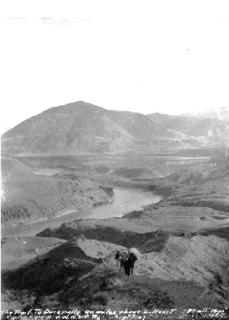 W
WThe River Trail was a main route for travel in the colonial era of what is now the Canadian province of British Columbia, running northwards along the Fraser River from to present day Lillooet to Big Bar, British Columbia and points beyond in the Cariboo District. The route was primarily in use during the Fraser Canyon Gold Rush and associated explorations by prospectors northwards in the search for gold in the Cariboo and Omineca Districts.
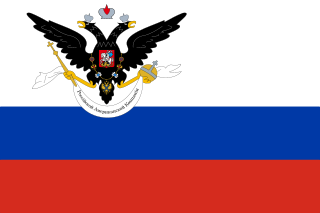 W
WRussian America was the name of the Russian colonial possessions in North America from 1733 to 1867. Its capital was Novo-Arkhangelsk, which is now Sitka, Alaska, United States. Settlements spanned parts of what are now the U.S. states of California, Alaska and three forts in Hawaii. Formal incorporation of the possessions by Russia did not take place until the Ukase of 1799 which established a monopoly for the Russian–American Company and also granted the Russian Orthodox Church certain rights in the new possessions. Many of its possessions were abandoned in the 19th century. In 1867, Russia sold its last remaining possessions to the United States of America for $7.2 million.
 W
WThe Russian colonization of the Americas covers the period from 1732 to 1867, when the Russian Empire laid claim to northern Pacific Coast territories in the Americas. Russian colonial possessions in the Americas are collectively known as Russian America. Russian expansion eastward began in 1552, and in 1639 Russian explorers reached the Pacific Ocean. In 1725, Emperor Peter the Great ordered navigator Vitus Bering to explore the North Pacific for potential colonization. The Russians were primarily interested in the abundance of fur-bearing mammals on Alaska's coast, as stocks had been depleted by over hunting in Siberia. Bering's first voyage was foiled by thick fog and ice, but in 1741 a second voyage by Bering and Aleksei Chirikov made sight of the North American mainland.
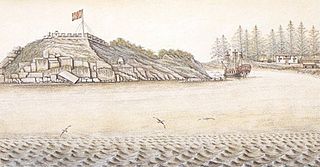 W
WSanta Cruz de Nuca, was a Spanish colonial fort and settlement and the first European colony in British Columbia. The settlement was founded in 1789 and abandoned in 1795, with its far northerly position making it the "high-water mark" of verified Northerly Spanish settlement along the North American West coast. The colony was first established with the Spanish aim of securing the entire West coast of the continent from Vancouver island southwards, for the Spanish crown.
 W
WHMS Sparrowhawk was a Vigilant-class second-class despatch/gunvessel launched on 9 February 1856 at Limehouse, England and served at various stations in the Far East. By the spring of 1865, her rig was a converted to that of a three-masted barque. She was sold in 1872 and was eventually lost in a typhoon.
 W
WThe Stickeen Territories, also colloquially rendered as Stickeen Territory, Stikine Territory, and Stikeen Territory, was a territory of British North America whose brief existence began July 19, 1862, and concluded July of the following year. The region was split from the North-Western Territory in the wake of the Stikine Gold Rush. The initial strike attracted large numbers of miners — mostly American — to the region; by detaching the region from the exclusive trade zone of the Hudson's Bay Company, British authorities were able to impose tariffs and licences on the speculators. The new territory, named after the Stikine River, was under the responsibility of the Governor of the Colony of British Columbia, James Douglas, who was appointed "Administrator of the Stickeen Territories" and under British law, within the jurisdiction of the Supreme Court of British Columbia.
 W
WSutil was a brig-rigged schooner built in 1791 by the Spanish Navy at San Blas, New Spain. It was nearly identical to Mexicana, also built at San Blas in 1791. Both vessels were built for exploring the newly discovered Strait of Georgia, carried out in 1792 under Dionisio Alcalá Galiano, on Sutil, and Cayetano Valdés y Flores, on Mexicana. During this voyage the two Spanish vessels encountered the two British vessels under George Vancouver, HMS Discovery and HMS Chatham, which were also engaged in exploring the Strait of Georgia. The two expeditions cooperated in surveying the complex channels between the Strait of Georgia and Queen Charlotte Strait, in the process proving the insularity of Vancouver Island. After this first voyage Sutil continued to serve the San Blas Naval Department, making various voyages to Alta California and the Pacific Northwest coast.
 W
WJames Cook's third and final voyage took the route from Plymouth via Cape Town and Tenerife to New Zealand and the Hawaiian Islands, and along the North American coast to the Bering Strait.
 W
WTonquin was a 290-ton American merchant ship initially operated by Fanning & Coles and later by the Pacific Fur Company (PFC), a subsidiary of the American Fur Company (AFC). Its first commander was Edmund Fanning, who sailed to the Qing Empire for valuable Chinese trade goods in 1807. The vessel was outfitted for another journey to China and then was sold to German-American entrepreneur John Jacob Astor. Included within his intricate plans to assume control over portions of the lucrative North American fur trade, the ship was intended to establish and supply trading outposts on the Pacific Northwest coast. Valuable animal furs purchased and trapped in the region would then be shipped to China, where consumer demand was high for particular pelts.
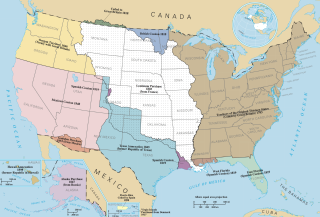 W
WThe Convention respecting fisheries, boundary and the restoration of slaves between the United States and the United Kingdom, also known as the London Convention, Anglo-American Convention of 1818, Convention of 1818, or simply the Treaty of 1818, is an international treaty signed in 1818 between the above parties. This treaty resolved standing boundary issues between the two nations. The treaty allowed for joint occupation and settlement of the Oregon Country, known to the British and in Canadian history as the Columbia District of the Hudson's Bay Company, and including the southern portion of its sister district New Caledonia.